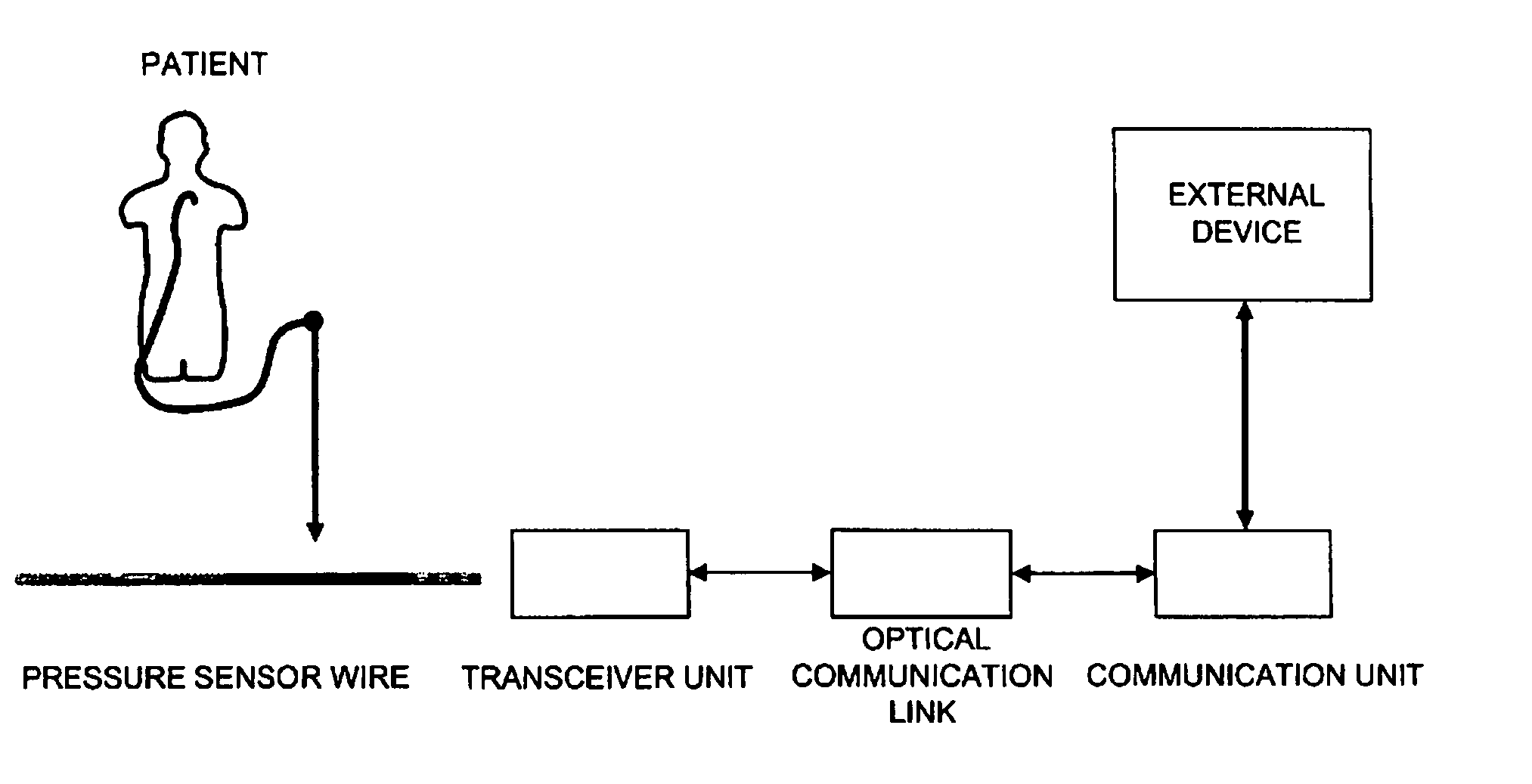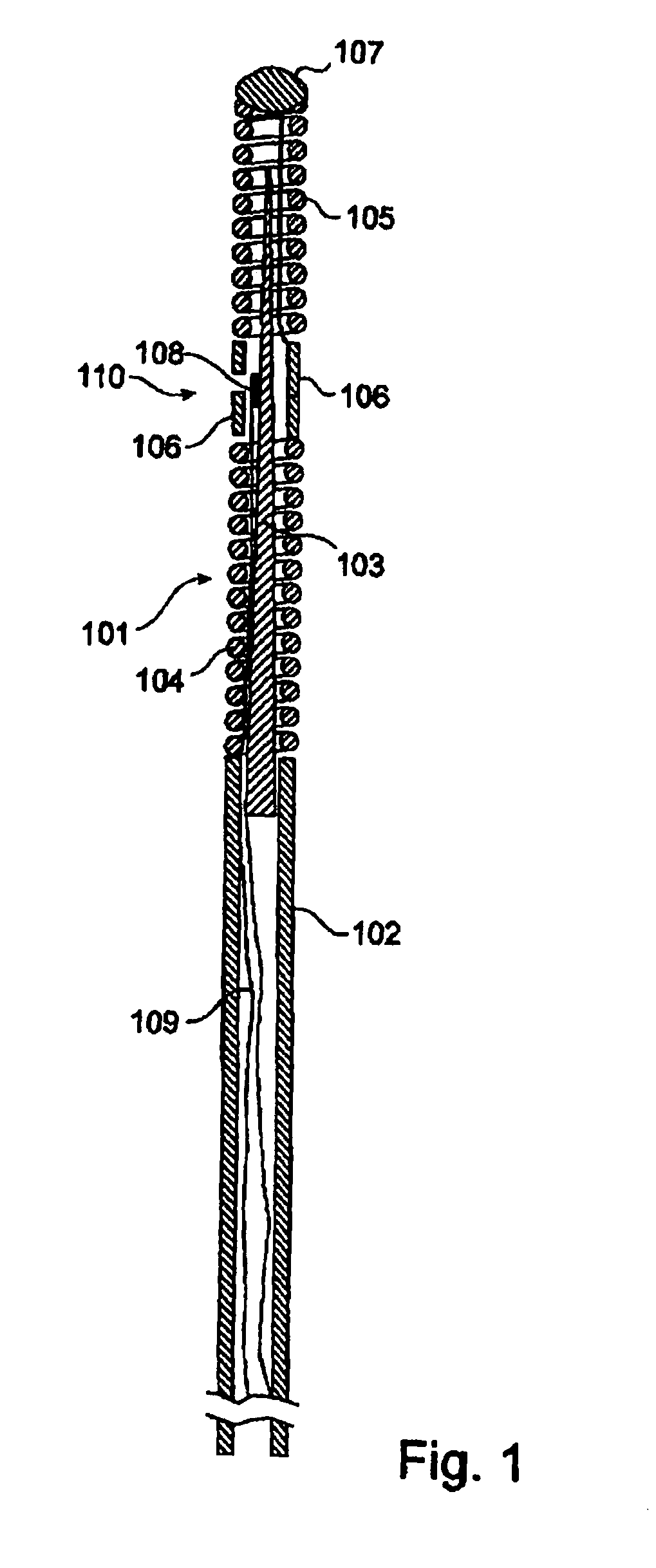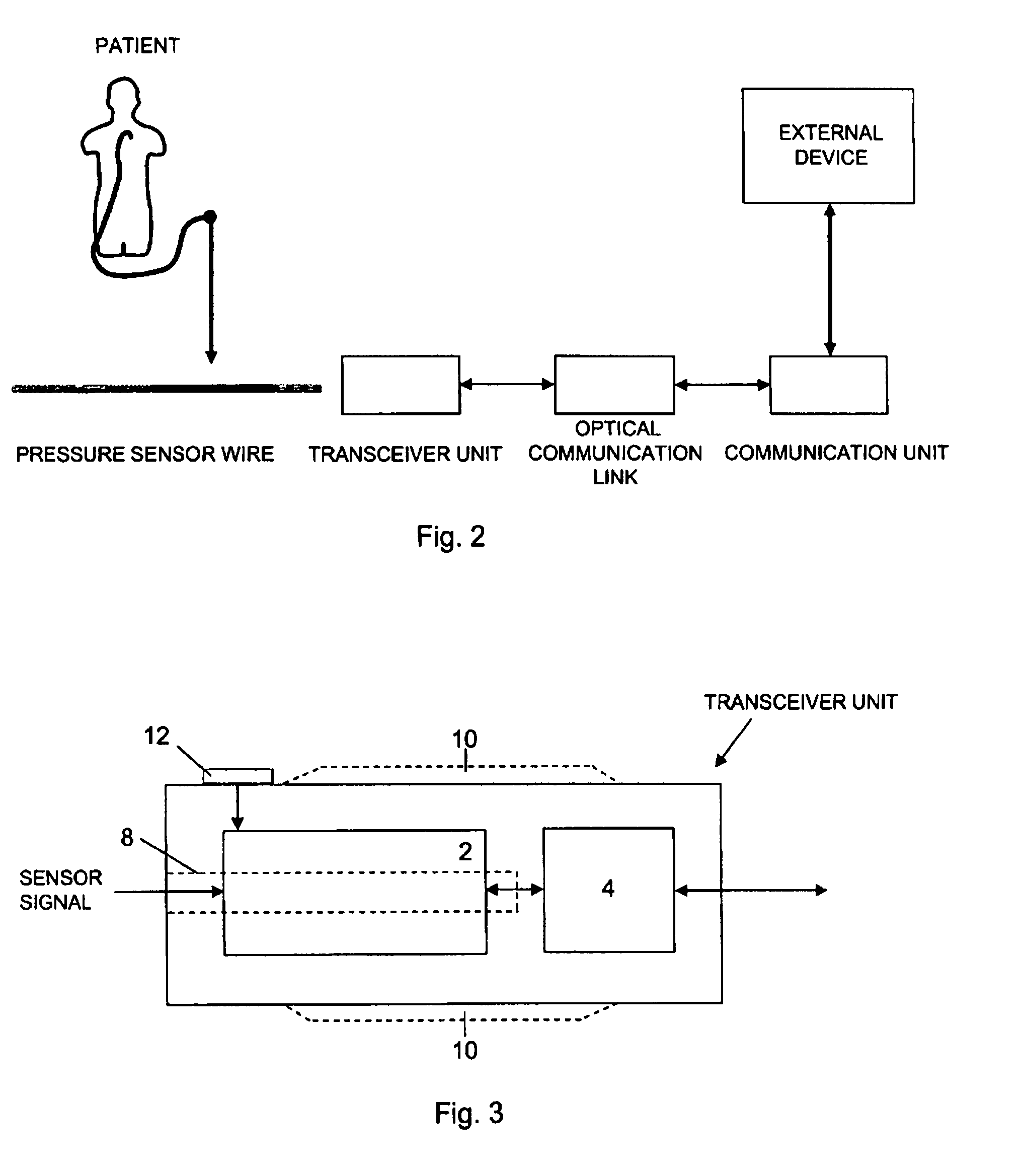Measurement system to measure a physiological condition in a body
a physiological condition and measurement system technology, applied in the field of measurement systems, can solve the problems of inability to meet the requirements of patient monitors, inability to meet the requirements of blood pressure transducers and monitors, and the resulting standards that have evolved, and achieve the effect of small and light, more user-friendly
- Summary
- Abstract
- Description
- Claims
- Application Information
AI Technical Summary
Benefits of technology
Problems solved by technology
Method used
Image
Examples
first embodiment
[0067] the communication is a one-way communication from the transceiver unit (and the sensor) to the communication unit (and external device). In this embodiment the light emitting diode is arranged at the side facing the transceiver unit and the photo detector faces the communication unit.
second embodiment
[0068]According to the invention the communication is a both-way communication, and in that case two optocouplers are arranged enabling communication in both directions.
[0069]For both embodiment more than one optocoupler may be arranged in either direction to provide redundancy for the optical communication link.
[0070]When the sensor wire has been inserted into the transceiver unit and the communication unit is connected to the external device the system is ready for use.
[0071]By e.g. pressing the activation button on, or by activating the transceiver in another way, the transceiver unit it is activated and will then try to establish an optical connection with the communication unit via the optical connector link. This is preferably performed by a conventional handshake procedure in order to identify the transceiver unit. The system is now ready to receive measured sensor data.
[0072]The sensor values is preferably A / D converted and supplied to the optical communication link as a pul...
PUM
 Login to View More
Login to View More Abstract
Description
Claims
Application Information
 Login to View More
Login to View More - R&D
- Intellectual Property
- Life Sciences
- Materials
- Tech Scout
- Unparalleled Data Quality
- Higher Quality Content
- 60% Fewer Hallucinations
Browse by: Latest US Patents, China's latest patents, Technical Efficacy Thesaurus, Application Domain, Technology Topic, Popular Technical Reports.
© 2025 PatSnap. All rights reserved.Legal|Privacy policy|Modern Slavery Act Transparency Statement|Sitemap|About US| Contact US: help@patsnap.com



